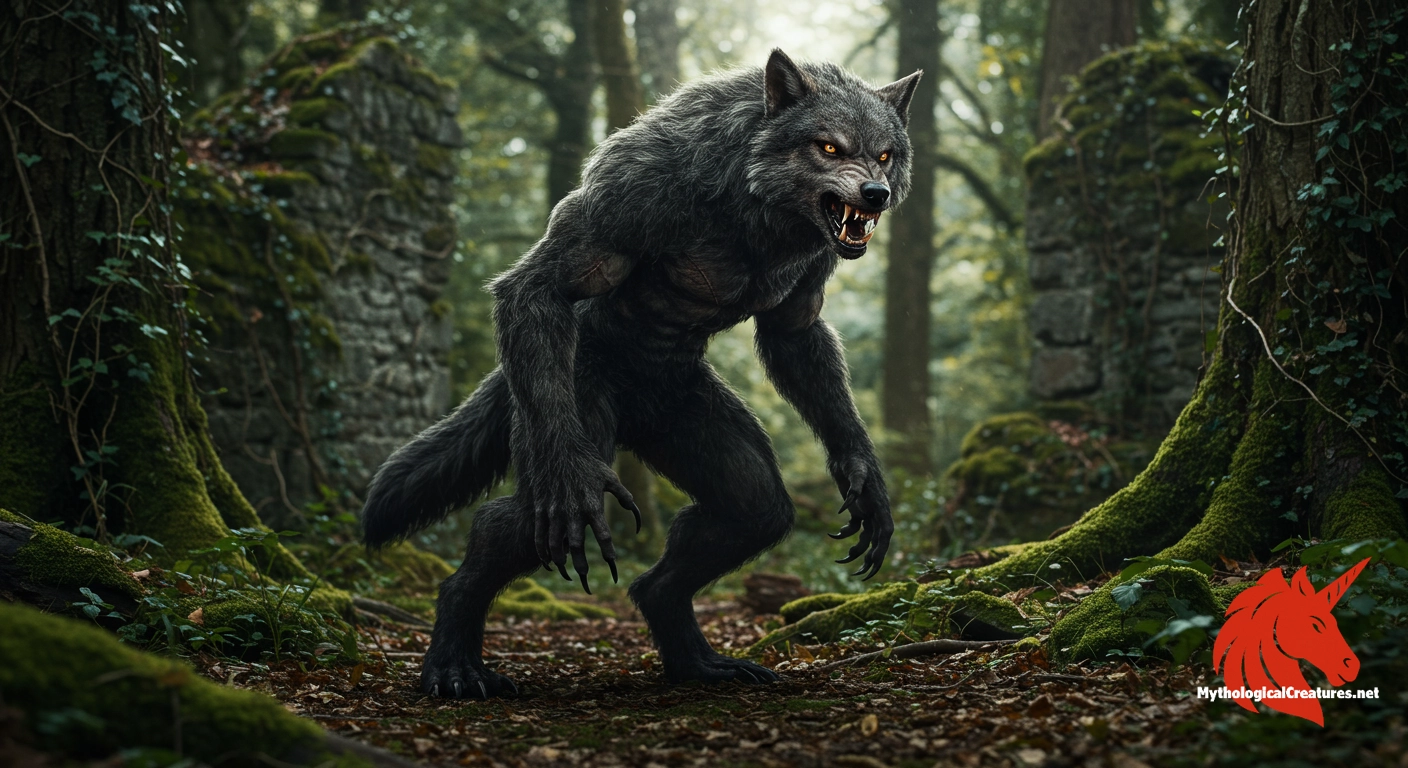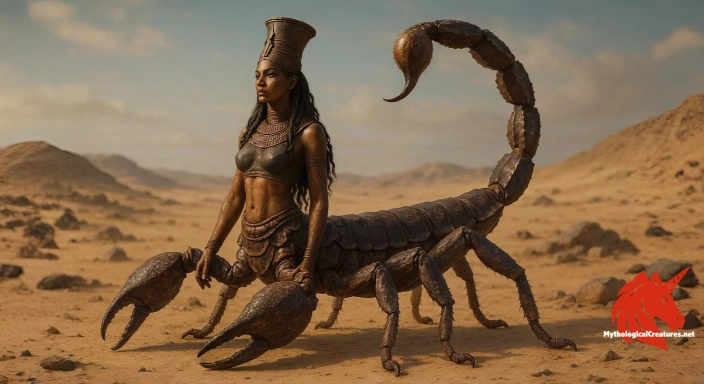Werewolf: A werewolf is a folkloric creature that can transform from human form into a wolf or hybrid creature, typically under a curse.

Werewolf
Werewolf - Werewolf legends explore themes of human transformation, the duality of nature, and the consequences of cursed afflictions, reflecting societal fears during witch-hunt eras.
Origins & First Encounters
The werewolf stands as an enduring symbol of the liminal space between humanity and the wild, embodying both beauty and terror in its dual nature. Born out of ancient linguistic roots with the Old English term 'werwulf' and Greek echoes in 'lycanthrope', this creature emerged from the shadows of folklore at a time when the mystical and the mundane were deeply intertwined. Its earliest attestation weaves through classical antiquity and medieval texts, offering glimpses into a world where curse and transformation blurred the lines of human identity. Over time, the werewolf became emblematic of mankind’s internal struggle against unbridled impulses and the chaotic forces of nature. Tales of involuntary metamorphosis, often triggered by a full moon or a fateful bite, rapidly took hold of the collective imagination. In the medieval period, religious and cultural forces intermingled to reinterpret these legends, colouring them with cautionary overtones against straying from societal norms. As narratives evolved, the werewolf morphed from an obscure curse into a central figure in both local and pan-European mythologies. Even today, its enduring imagery continues to fascinate, drawing parallels between the dualities of man and beast, civilisation and savagery.
Source Texts & Tale Variants
Ancient literary sources such as the works of Petronius and the accounts preserved by medieval chroniclers provide some of the earliest written instances of the werewolf phenomenon. Various story variants and recorded trials further enriched the mythos, highlighting the interplay between personal misfortune and supernatural retribution. Medieval romances, including the celebrated narrative of Bisclavret, introduced an element of tragic nobility to the cursed condition. Beyond literature, oral traditions and chapbooks played a significant role in proliferating werewolf legends, offering a patchwork of regional and narrative nuances. These disparate sources often merge stark punishment with elements of mystery, challenging the notion of a singular, definitive portrayal. Folkloric accounts not only detailed physical transformations but also explored the psychological torment experienced by those afflicted. With the advent of the early modern period, werewolf narratives gained additional traction, reflecting both popular superstition and the dark undercurrents of societal fears. Alongside documented trials in Switzerland and parts of German-speaking Europe, these sources reveal a tapestry of interpretations that continue to evolve. The narrative diversity in primary sources underlines the complexity of the werewolf myth, ensuring that no two accounts are entirely alike. In every retelling, the creature remains a mirror to the multifaceted human condition, merging folklore with moral and existential dilemmas.
Form & Powers
Descriptions of the werewolf vividly capture a dynamic fusion of human form and lupine ferocity. The creature is typically depicted with a muscular, towering physique that merges the strength of an apex predator with subtle human contours. Thick, matted fur often covers its body, interspersed with patches of ragged skin that hint at its convoluted nature. Prominent features include a pronounced snout, sharp canine teeth, and eyes that gleam with unsettling intelligence and savagery. Variations in portrayals suggest a range from an almost entirely beastly appearance to a more ambiguous half-man, half-wolf state. Clawed hands and powerful limbs further accentuate the werewolf’s predatory potential, augmenting its reputation as a formidable opponent. Some accounts allude to an unsettling translucence in its eyes, as if they glowed with an inner fire during the night of transformation. Artistic renditions also capture the harrowing moment of metamorphosis, where the boundary between reason and beast is irrevocably blurred. These vivid physical details not only evoke horror but also symbolise the animalistic side lurking beneath human civilisation. In each version, the werewolf’s appearance is a testament to the myth’s capacity to straddle the realms of the sublime and the monstrous.
Regional Faces
The lore surrounding the werewolf varies considerably across different European regions, each infusing the myth with local colour and distinct thematic nuances. In Germanic territories, the creature is often portrayed as a sinister force, its ferocity underscored by local superstitions of wolf-charming and dark enchantments. In contrast, French narratives sometimes imbue the werewolf with a tragic quality, suggesting that the curse may also be a form of divine retribution or inescapable fate. Alpine regions, such as Bavaria and Austria, record persistent accounts of wolf-charmers and the mysterious, often fatal, transformations during winters and full moons. Swiss legends integrate the werewolf phenomenon with the era’s broader witch-hunt narratives, where accusations frequently mingled with those of witchcraft. Eastern European traditions, while sharing similar transformation motifs, often emphasise the spiritual and shamanistic elements associated with the creature. Local adaptations in Mediterranean folklore may even hint at a connection between the werewolf and ancient rites of initiation and cyclic regeneration. The diversity of these regional traditions reflects the widespread cultural impact of the werewolf myth. Each narrative adaptation reinforces the creature’s dual representation as both a monster and an allegorical embodiment of humanity’s hidden instincts. This regional plurality enriches the overall mythos, making the werewolf a versatile symbol that can be moulded to fit the cultural and historical context of each area.
Cultural Parallels
The werewolf shares stimulating parallels with various shape-shifting and cursed beings found across global mythologies. Its dual nature is reminiscent of the ancient Greek myth of Lycaon, whose transformation into a wolf served as a dire lesson on the consequences of impiety. Similar themes resonate in Celtic and Norse legends, where berserkers and skin-changers explore the boundaries between human consciousness and animal instinct. Unlike the sinister portrayal of vampires, the werewolf embodies a raw physical aggression that is intimately connected to the forces of nature. Comparative studies reveal that many cultures have conceived of transformation as both a punishment and a profound metaphor for inner turmoil. Indigenous American narratives, for instance, present shape-shifting figures that oscillate between benevolence and ferocity, reflecting a nuanced understanding of the natural world. Across continents, this motif serves as a potent reminder of man’s precarious relationship with the wild, a theme central to the werewolf legend. In many respects, the creature’s narrative taps into an universal archetype, one that continually invites reinterpretation and debate. The overlaps and contrasts with other mythological beings enrich the werewolf’s story, suggesting an intrinsic need among diverse cultures to confront the dualities within human nature. In this way, the werewolf continues to bridge disparate mythic traditions, positioning itself as a versatile and enduring symbol.
Legacy & Modern Evolution
The historical journey of the werewolf myth spans from its ominous beginnings in medieval Europe to a robust modern legacy that permeates contemporary culture. Once a subject of grim witch trials and bloody persecutions, the werewolf evolved from a feared symbol of cursed existence into a complex cultural icon. In the early modern period, the creature’s transformation from folklore figure to literary subject was marked by a blend of horror, tragedy, and ambiguity. The shift in narrative focus from diabolical punishment to inner human conflict is evident in both classic Gothic novels and modern reinterpretations in film and television. Today, werewolf stories are often reimagined with psychological depth, exploring the internal battles between civilisation and uncivilised impulses. Popular movies, television series, and comic books have cemented the werewolf as an enduring archetype that appeals to diverse audiences across the globe. Contemporary portrayals lean towards a nuanced depiction that balances the horror of uncontrollable power with the poignant loss of humanity. As modern society continues to explore themes of identity, transformation, and the nature of evil, the werewolf remains a powerful metaphor for these struggles. The evolution of its narrative reflects broader societal changes in the understanding of morality and the human condition. Ultimately, the werewolf endures not only as a relic of superstition but also as a dynamic emblem that continues to inspire creative expression and critical thought.
Interesting Fact
An intriguing aspect of werewolf lore is its deep-rooted connection with full moon mythology, a celestial phenomenon that has inspired both fear and fascination across cultures.
Quick Creature Info
Our Mythic Legendary Rating:

Also Sometimes Known As:
Habitat:
Supernatural Powers:
Physical Attributes:
Abilities:
Behavior:
Weaknesses:
Lore:
Related Creatures, Tales or Lore
- LLoup-Garou
- SSkinwalker
- WWerebear
References
Discover Another Mythical Legend You May Not Have Heard Of?
Uncover the mysteries of ancient folklore and expand your knowledge of legendary beings from cultures around the world.
Dare to Meet the Ta-Bitjet....
Mythical Disclaimer: The images and data on this site are derived from various historical and literary sources, but we have found that many myths often have multiple versions and interpretations across references, sometimes contradictory. As a result, these creature depictions are artistic interpretations—imaginative blends of folklore, legend, and a dash of AI guesswork. Because creature descriptions vary widely, our illustrations and accompanying information represent our best effort to honor mythology while bridging creative gaps. Enjoy these interpretations—just remember, we've done our best to respect the stories and validate available data, but in the realm of mythology, details often shift, imagination leads the way, and nothing is ever set in stone!
Curated by the Mythological Creatures Team (rev. May 2025)
